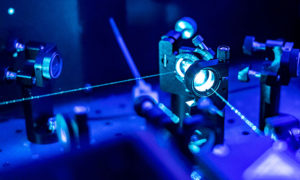
Integrated light modulators using lithium niobate thin films
Integrated light modulators using lithium niobate thin films. There are already commercial products (as far as I know only 1 company in the world) that make these modulators. Also, this is not the central goal of the research we do in our lab. However it could be a spinoff if some parts of our research are successful, in particular the proper functioning of the local infrastructure for microfabrication of photonic and opto-electronic devices.





